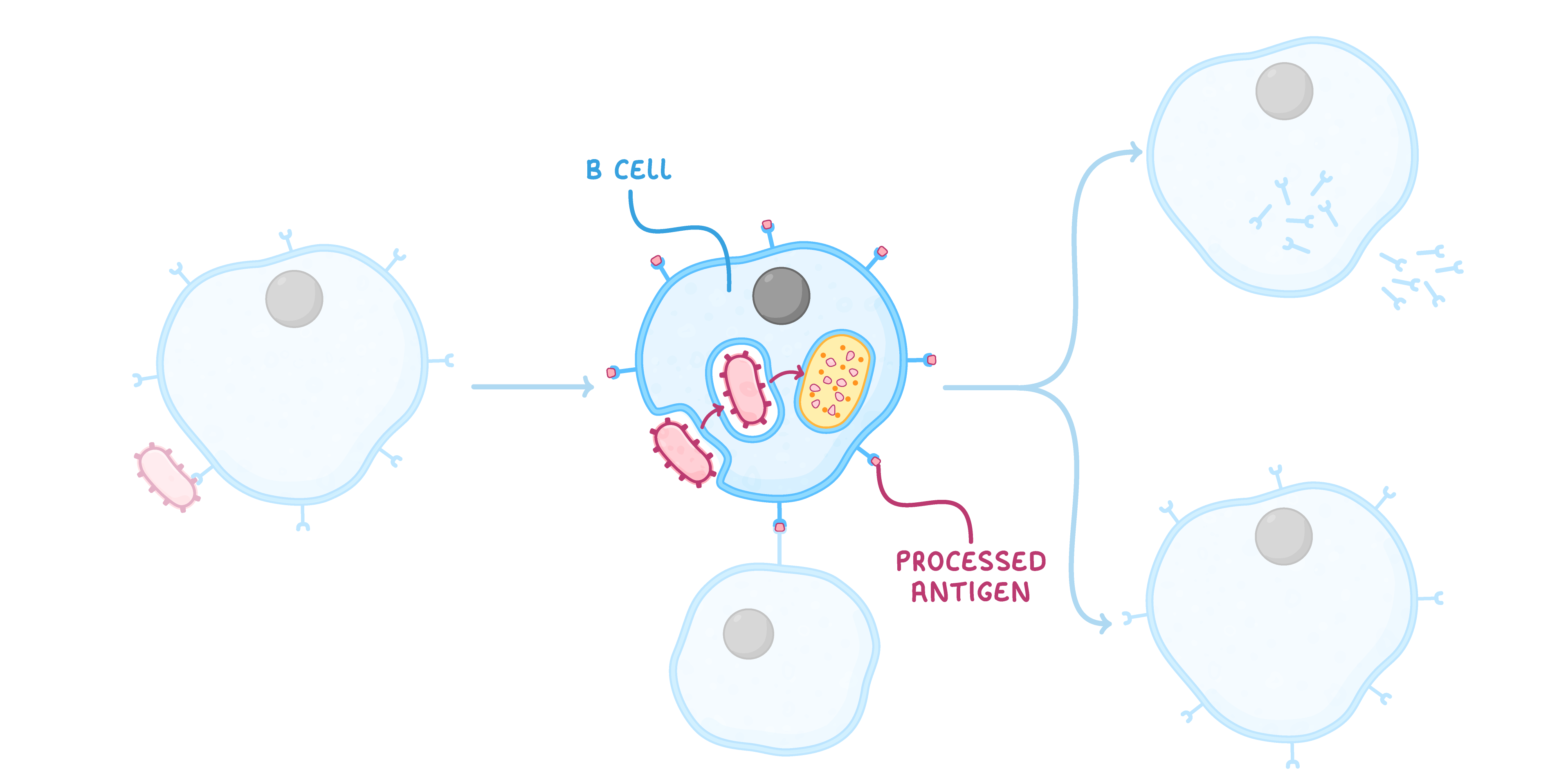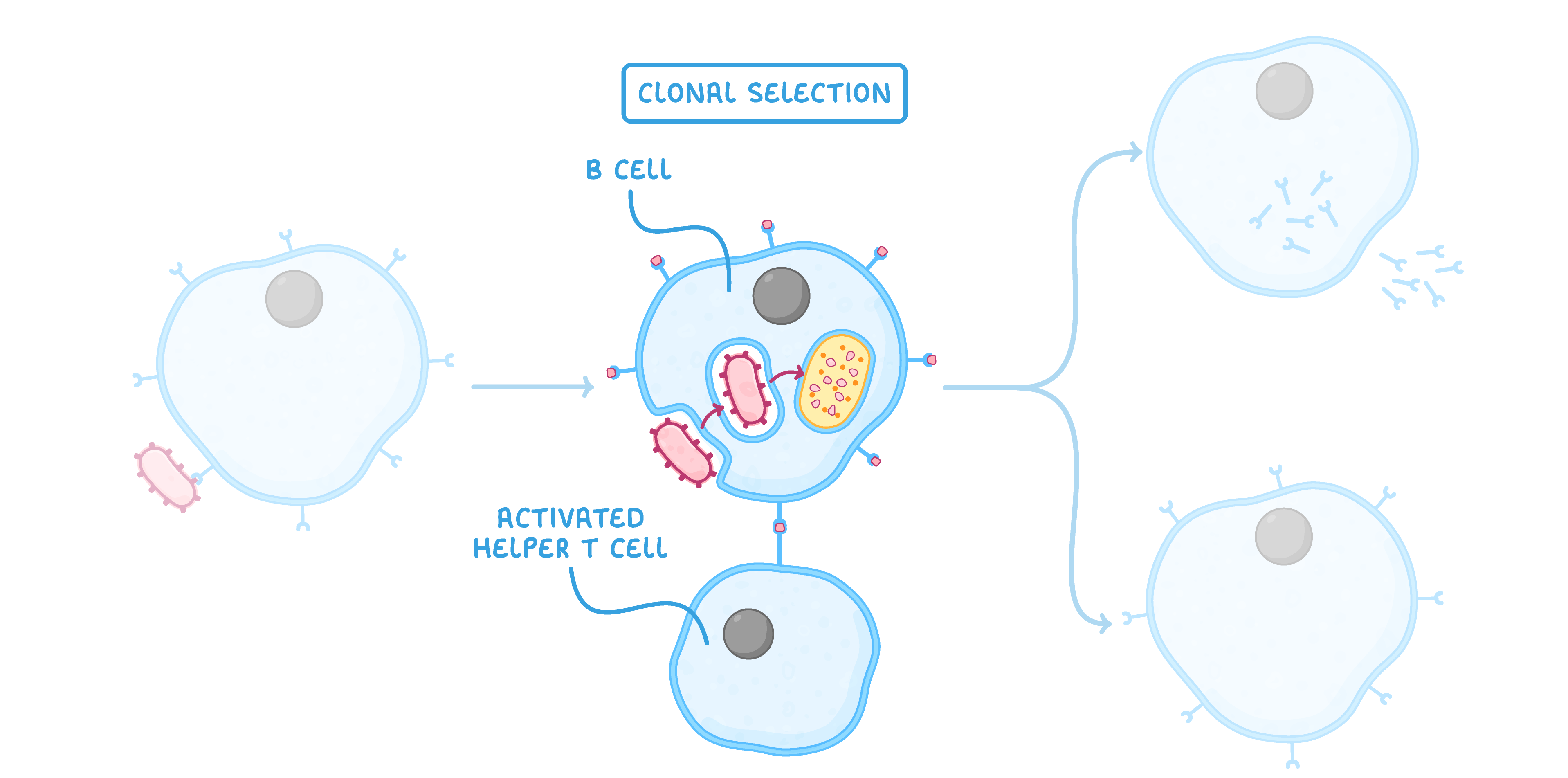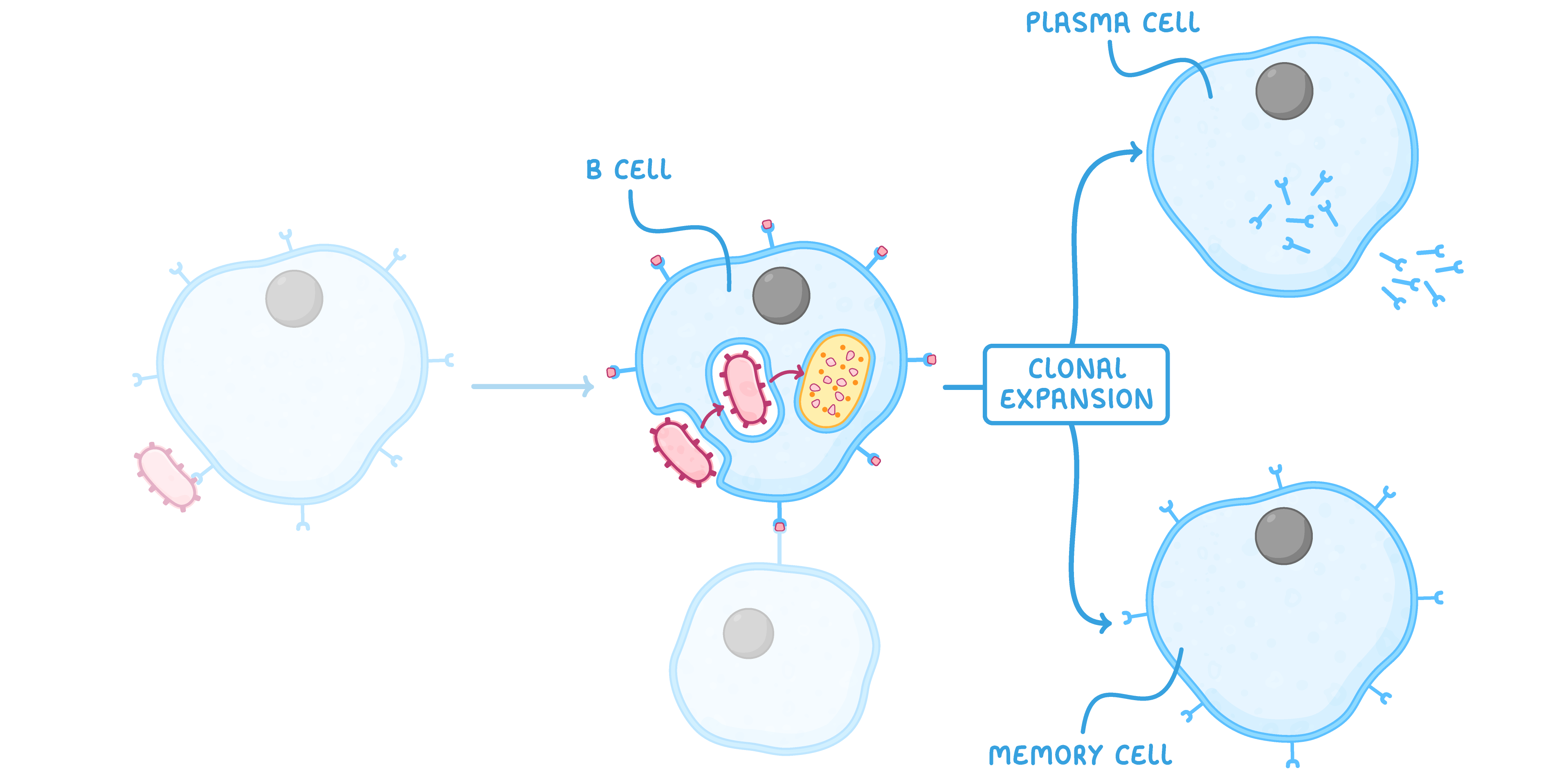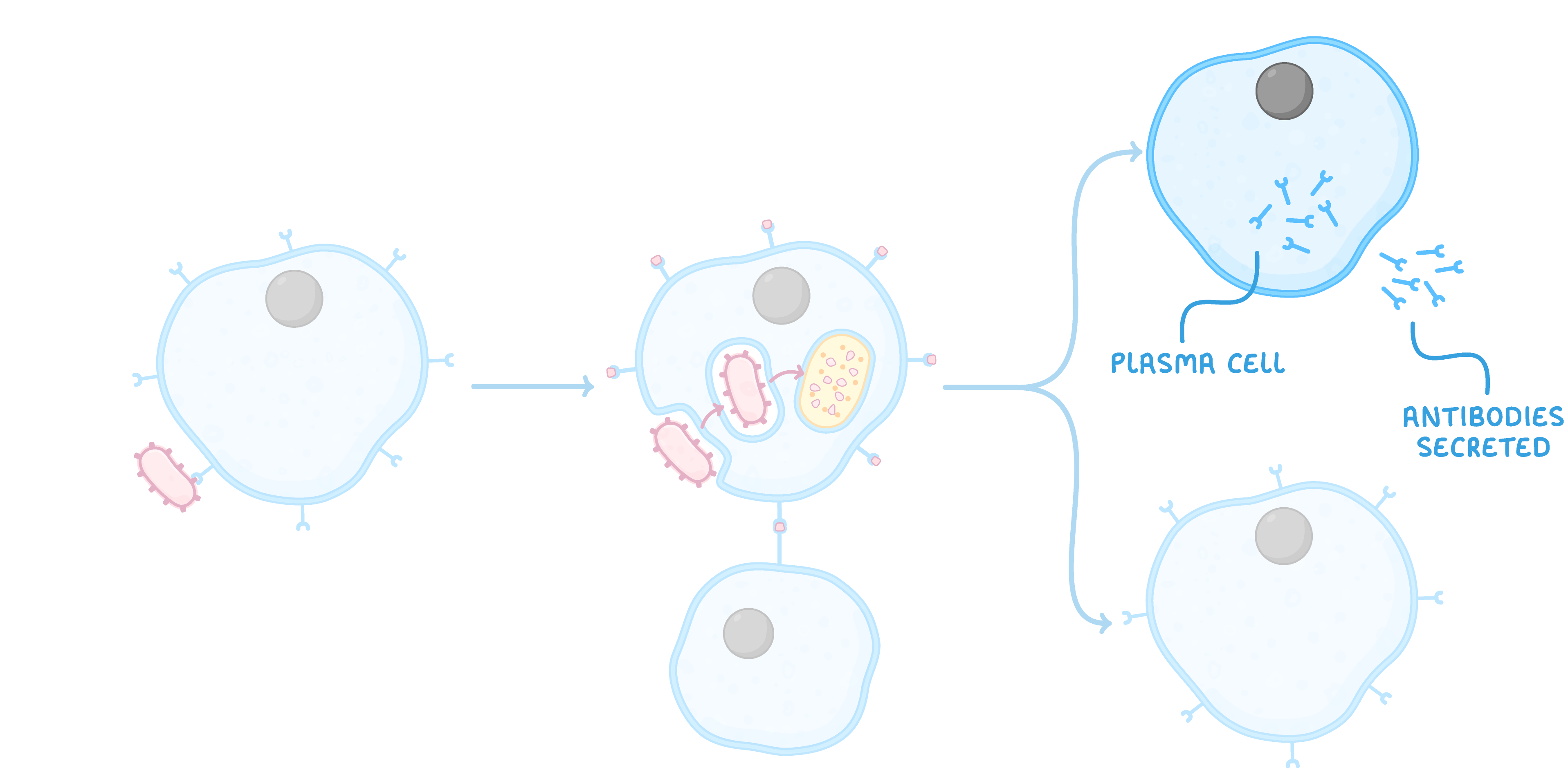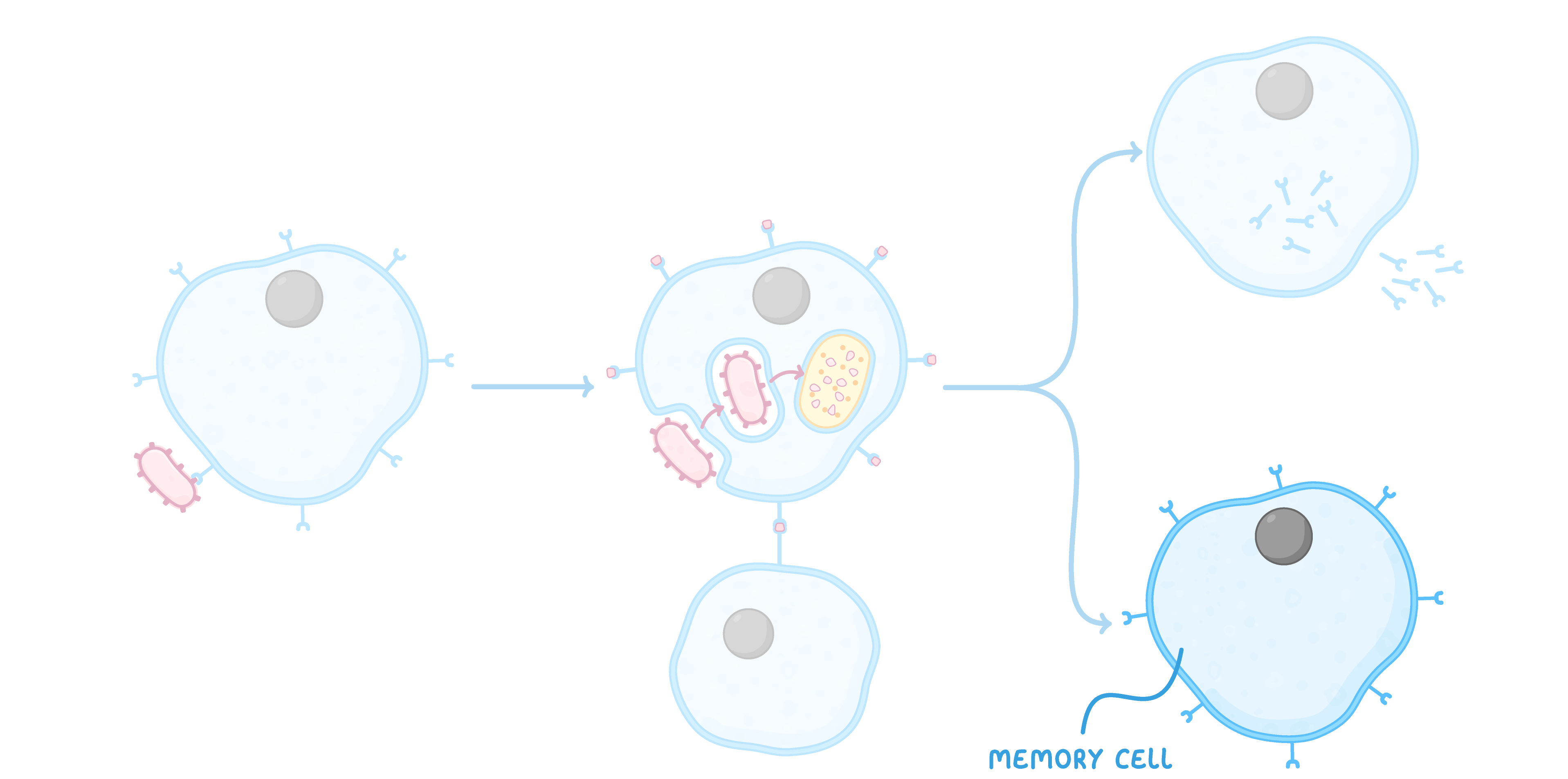Specific Immune System: The Humoral Response
This lesson covers:
- The different types of cells involved in the humoral response
- The role of B cells in the humoral response
- The differences between the primary and secondary immune response
The humoral response The humoral response is one of the specific defence mechanisms used to protect the body from disease. It involves the production of specific antibodies to destroy pathogens.  |
The humoral response involves the use of B lymphocytes or B cells. B cells produce and are covered in proteins known as antibodies. It is called the humoral response as antibodies are found in body fluids, which are otherwise known as 'humors'. |
Cells involved in the humoral response The humoral response involves the following types of cell: B cells
Plasma cells
Memory cells
Helper T cells
|
The humoral response The humoral response is so-called because it involves antibodies that are found in body fluids (or humors). The stages of the humoral response are as follows:  A B cell with a complementary antibody binds to the antigens on a pathogen. |
Make sure you know the difference between the following two terms:
|
Primary and secondary immune response The body's response to an infection depends on whether the specific pathogen has been encountered before or not. There are two types of immune response:
The graph below shows how the concentration of antibodies changes as the body is exposed to a pathogen on two separate occasions. |
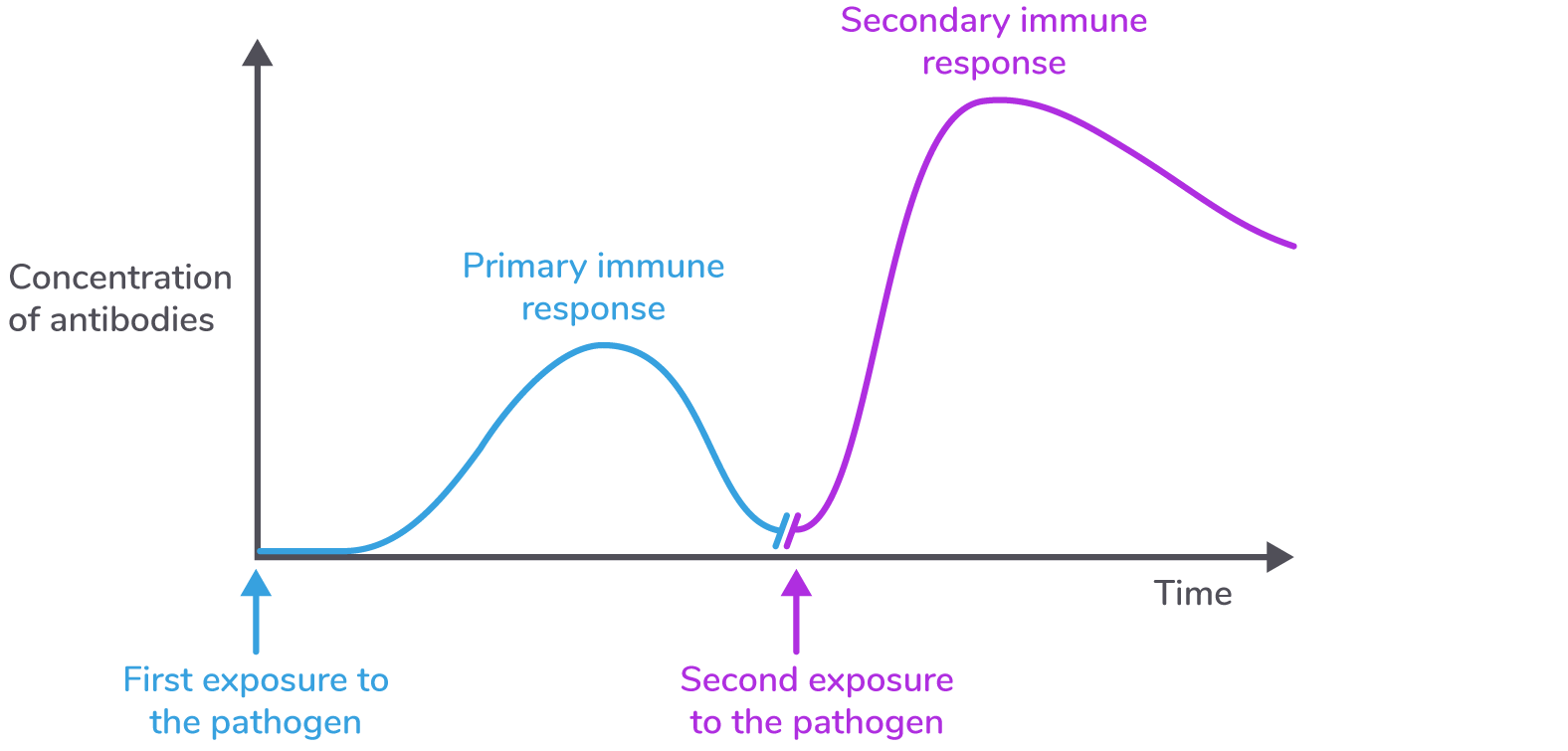 |
Primary immune response:
|
Secondary immune response:
|
Comparing the primary and secondary immune response  |
Autoimmune diseases Sometimes the immune system cannot recognise 'self' antigens (the antigens present on the body's own cells) and starts to attack them. This occurrence is known as an autoimmune disease and leads to the breakdown of healthy tissues. Examples of autoimmune diseases include:
|
